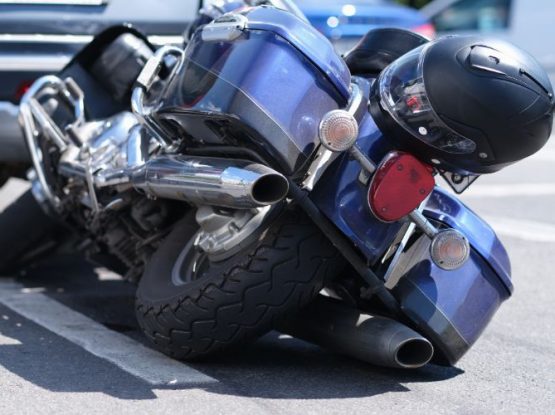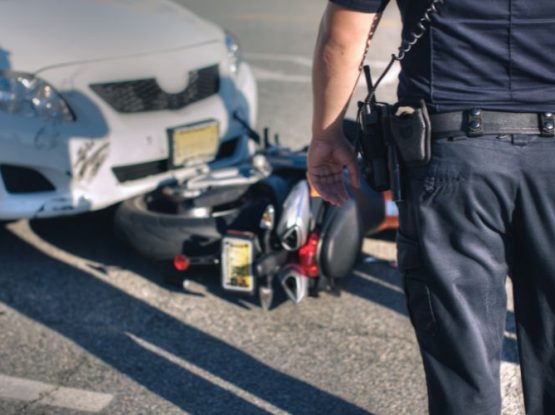Motorcycle riding offers a thrilling and liberating experience, but it also comes with inherent risks due to the lack of protective metal and airbags. To mitigate these risks, motorcycle manufacturers have been investing in cutting-edge technology and innovative safety features. In this article, we’ll explore six motorcycle safety features that significantly contribute to preventing accidents and enhancing the overall safety of riders.
1. Anti-lock Braking System (ABS)
One of the most critical safety features in modern motorcycles is the Anti-lock Braking System, commonly known as ABS. ABS technology has been widely used in cars for years, but it has only recently made its way into the world of motorcycles.
ABS prevents wheel lock-up during emergency braking, ensuring that riders maintain control and stability when stopping suddenly. This is particularly important for motorcycles since a locked wheel can lead to a dangerous skid and potential loss of control. By modulating brake pressure, ABS technology allows riders to stop more effectively and avoid collisions with other vehicles or obstacles.
The benefit of ABS becomes particularly evident in wet or slippery road conditions. Without ABS, it’s easy for a motorcycle’s wheels to lock when braking on a slippery surface, potentially causing a crash. With ABS, the system automatically adjusts brake pressure, keeping the wheels from locking, and helping the rider maintain balance and control.
2. Traction Control System
Traction control is another crucial feature that helps prevent motorcycle accidents, especially in challenging road conditions. This system prevents wheel spin during acceleration, ensuring that riders maintain control of the motorcycle. Traction control detects when the rear wheel is slipping and adjusts power delivery to prevent skidding. It’s particularly valuable on motorcycles with high horsepower, where too much throttle can lead to a loss of traction and a potential crash.
Traction control systems vary in sophistication, with advanced systems capable of making rapid adjustments to maintain optimal traction, even in adverse conditions. These systems are designed to enhance safety without compromising the riding experience.
3. Stability Control and Electronic Stability Control (ESC)
Stability control systems, also known as Electronic Stability Control (ESC) in some models, help riders maintain balance, especially during cornering and challenging conditions. These systems monitor various factors such as lean angle, tire grip, and other dynamic variables to ensure the motorcycle remains stable and avoids skidding or high-side accidents.
During cornering, if the system detects that the motorcycle is about to lose grip or skid, it intervenes by adjusting power or braking specific wheels to maintain stability. ESC technology significantly reduces the risk of accidents caused by a loss of control during turns, making motorcycles safer for riders of all skill levels.
4. Adaptive Headlights
One of the most common accident scenarios for motorcyclists involves nighttime or low-light conditions when visibility is reduced. Standard motorcycle headlights illuminate the road ahead, but they do not always adjust to the rider’s actions. This can be particularly challenging during cornering when the bike leans and the headlight’s beam remains static.
Adaptive headlights have addressed this problem by automatically adjusting their beam patterns based on the motorcycle’s lean angle. As the rider leans into a curve, the headlight swivels to illuminate the path in the direction of the turn. This technology provides a significant safety boost, as it enhances visibility and allows the rider to see obstacles and potential hazards around curves much sooner.
5. Blind Spot Detection Systems
Blind spot detection systems, increasingly common in cars, are now being incorporated into motorcycles. These systems use sensors to monitor the motorcycle’s surroundings, alerting riders to vehicles or obstacles in their blind spots. This technology is crucial in preventing accidents caused by sudden lane changes, particularly on multi-lane highways where the risk of being in another vehicle’s blind spot is high.
When a vehicle approaches a rider’s blind spot, the system typically triggers a visual or auditory alert, giving the rider valuable information to make safe lane-change decisions. Blind spot detection is especially valuable in heavy traffic, where it’s easy for motorcycles to go unnoticed by larger vehicles.
6. Collision Avoidance and Automatic Emergency Braking
Some motorcycles are now equipped with collision avoidance and automatic emergency braking systems. These technologies utilize sensors and cameras to detect imminent collisions with other vehicles or obstacles. When a potential collision is detected and the rider does not react in time, the system intervenes by applying the brakes to slow down or stop the motorcycle.
These systems are designed to provide an additional layer of safety, especially in situations where a rider’s reaction time may not be sufficient to prevent an accident. While the technology does not replace a rider’s vigilance and decision-making, it can serve as a vital backup system to mitigate the severity of accidents or avoid them altogether.
Motorcycle safety is a top priority for manufacturers, and these innovative safety features are a testament to their commitment. While technology has dramatically improved motorcycle safety, it’s important to note that these features are not a substitute for rider responsibility and skill. Safety technology is most effective when combined with responsible riding practices, defensive driving, and ongoing rider education.
As the motorcycle industry continues to embrace advanced safety features, riders can look forward to a safer and more enjoyable riding experience. By understanding and utilizing these features, riders can significantly reduce the risks associated with motorcycling and enjoy the freedom of the open road with greater peace of mind.
Accidents can still happen, and that’s where the best motorcycle accident attorney in Orange County comes into play. Marc Lazarus is a motorcycle accident attorney here to help riders navigate the complexities of the legal system, seek compensation for their injuries, and ensure they receive the support they need to recover. As technology continues to evolve, personal injury lawyers will remain a critical resource for riders in the unfortunate event of a motorcycle accident.
At Motorcycle Accident Attorney, we take pride in being recognized as one of Orange County, CA‘s leading motorcycle accident law firms. We encourage you to schedule a free consultation today to discuss your legal options.




